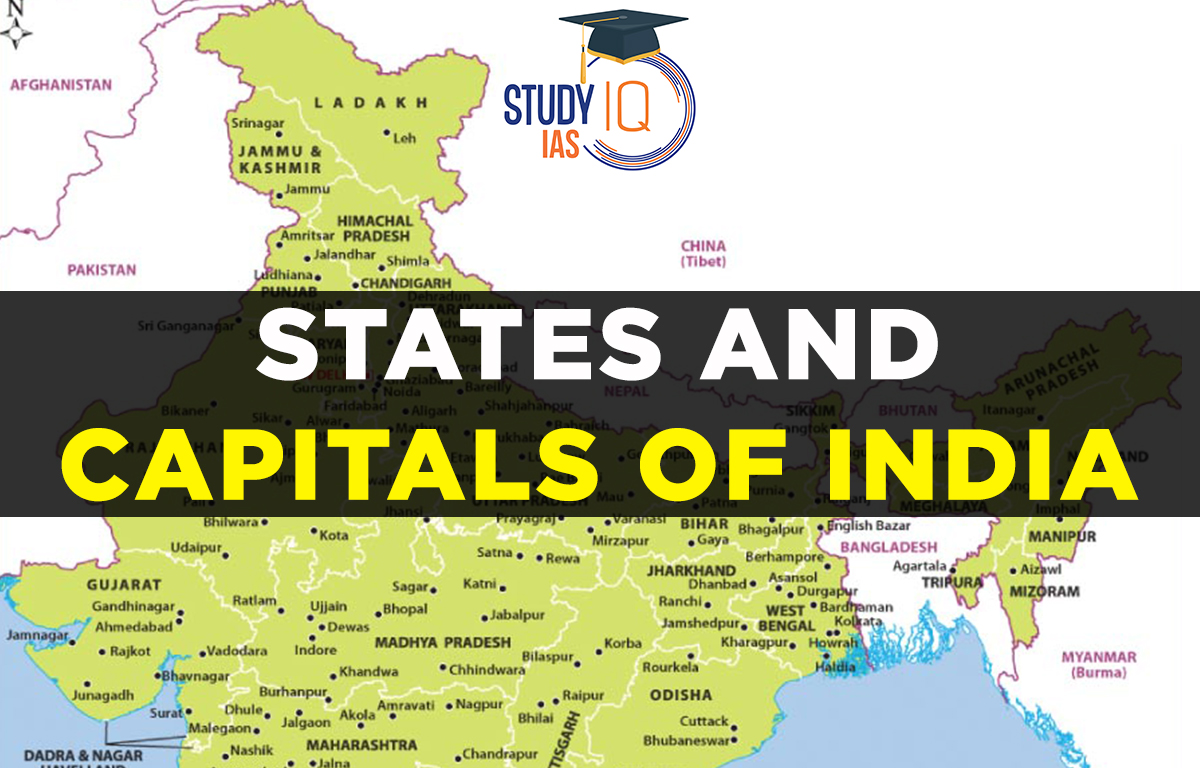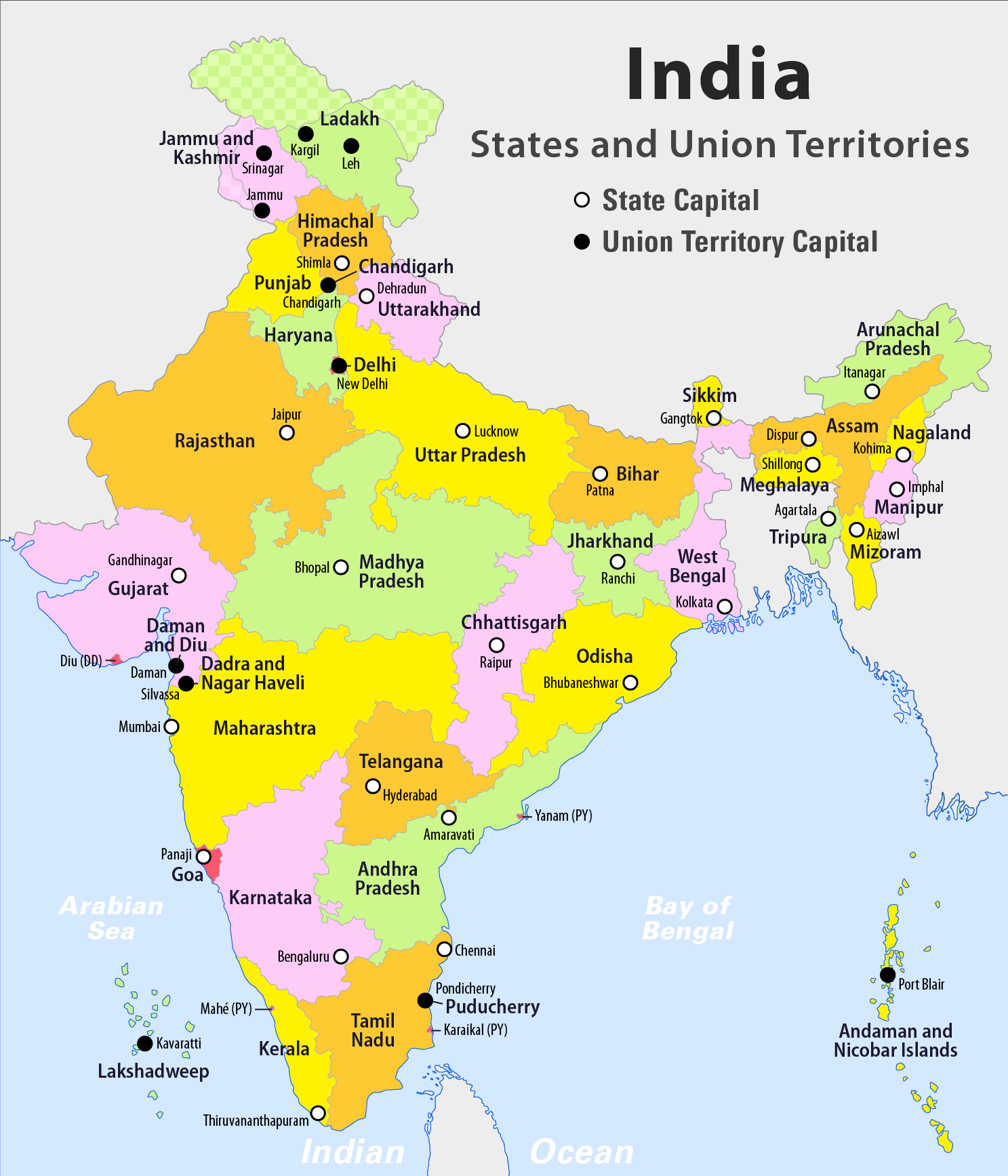
Currently, India has a total of 28 States and 8 UTs. Explore the list of Indian states and capitals, along with a map featuring all 28 states and 8 Union Territories.
Published On August 6th, 2024

Table of Contents
India, the seventh-largest country in the world and the second-most populous has 28 states and 8 union territories. It boasts a rich tapestry of culture and diversity. A Chief Minister rules every State. India occupies a prominent position in Southern Asia. Each State has an administrative, legislative, and judicial capital. In and in some states, all three functions are conducted in one capital. Governed by a parliamentary system, the Indian Constitution grants the central government the authority to reorganize states as necessary, recognizing the challenges of managing such a vast nation from a single location.
Despite the total number of states and Union territories in India being lesser-known to many, the country currently consists of 28 states and 8 Union territories. Each state possesses administrative, legislative, and judicial capitals, with some states hosting all three functions in a single city. Every state is helmed by a Chief Minister. Presented below is the comprehensive list of Indian States, Union Territories, and their respective capitals.
India is a republic with a parliamentary form of government that is a sovereign, secular, democratic nation. Both its natural beauty and cultural heritage are plentiful in this country. The linguistic, cultural, and geographic division of India is based on its States and Capitals of India. After becoming independent, it was divided into the British Provinces and the Princely States. The princely states had three alternatives once India and Pakistan were divided:
Out of the 552 princely states that made up India, 549 became part of it, and the other 3 refused. They did, however, eventually integrate. The Indian Constitution was ratified on November 26, 1949, and it went into effect on January 26, 1950. The States Reorganization Act of 1956 altered the state boundaries of India based on linguistic distinctions.
India has 28 States, which were founded in different years. Here is the List of 28 States of India and Capitals in 2024:
| State | Capital | Founded on |
| Andhra Pradesh | Amaravati | 1 November 1956 |
| Arunachal Pradesh | Itanagar | 20 February 1987 |
| Assam | Dispur | 26 January 1950 |
| Bihar | Patna | 22 March 1912 |
| Chhattisgarh | Raipur | 1 November 2000 |
| Goa | Panaji | 30 May 1987 |
| Gujarat | Gandhinagar | 1 May 1960 |
| Haryana | Chandigarh | 1 November 1966 |
| Himachal Pradesh | Shimla | 25 January 1971 |
| Jharkhand | Ranchi | 15 November 2000 |
| Karnataka | Bengaluru | 1 November 1956 |
| Kerala | Thiruvananthapuram | 1 November 1956 |
| Madhya Pradesh | Bhopal | 1 November 1956 |
| Maharashtra | Mumbai | 1 May 1960 |
| Manipur | Imphal | 21 January 1972 |
| Meghalaya | Shillong | 21 January 1972 |
| Mizoram | Aizawl | 20 February 1987 |
| Nagaland | Kohima | 1 December 1963 |
| Odisha | Bhubaneswar | 26 January 1950 |
| Punjab | Chandigarh | 1 November 1966 |
| Rajasthan | Jaipur | 1 November 1956 |
| Sikkim | Gangtok | 16 May 1975 |
| Tamil Nadu | Chennai | 26 January 1950 |
| Telangana | Hyderabad | 2 January 2014 |
| Tripura | Agartala | 21 January 1972 |
| Uttar Pradesh | Lucknow | 26 January 1950 |
| Uttarakhand | Dehradun | 9 November 2000 |
| West Bengal | Kolkata | 1 November 1956 |
Here is an India Map with States and their capital for a better understanding of territories’ location, neighbouring states and many more.

Currently, India has a total of 28 States and 8 Union Territories. Three states, Himachal Pradesh, Maharashtra, and Uttarakhand, have separate capitals for their summer and winter legislative sessions.
According to the Preamble of Indian Constitution, India is a republican, socialist, secular, and independent state. A democratic parliamentary system is used in India. The Indian President is in charge of the Union Territories. The President and the Governors serve as the executive branches of their respective states. State governments resemble the federal government in many ways. Chief Ministers oversee the state governments.
The 1956 creation of the States Reorganization Act was a major factor in the semantic reorganization of the borders of Indian states. Later, three different sorts of states—part A states, part B states, and part C states—were combined to form a single type of state, per a revision to the Indian Constitution.
The Act is still recognized as an authoritative player in imposing the current shape and forms to the Indian states, despite significant alterations to the state boundaries since 1947.
India had 8 union territories since 26th January 2024 by merging Daman and Diu with Dadra and Nagar Haveli into single union territory. Here we have discuss about the Union Territories of India in below table:
| S.NO | Union Territories | Capital | CM | Lt. Governor |
|---|---|---|---|---|
| 1 | Andaman and Nicobar Island | Port Blair | NA | Admiral D K Joshi |
| 2 | Chandigarh | Chandigarh | NA | Banwarilal Purohit (Administrator) |
| 3 | Dadra and Nagar Haveli and Daman and Diu | Daman | NA | Praful Patel (Administrator) |
| 4 | Delhi | Delhi | Arvind Kejriwal | Vinai Kumar Saxena |
| 5 | Ladakh | NA | NA | Radha Krishna Mathur |
| 6 | Lakshadweep | Kavaratti | NA | Praful Patel (Administrator) |
| 7 | Jammu and Kashmir | NA | NA | Manoj Sinha |
| 8 | Puducherry | Pondicherry | N. Rangaswamy | Dr. Tamilisai Soundararajan |
Andhra Pradesh was the first state in India to be created on the basis of a language. It originated from Madras State’s northern Telugu-speaking districts. According to the 1956 States Reorganization Act, new states were created or existing states were reorganized along linguistic grounds. Students can read all the details related to UPSC by visiting the official website of StudyIQ UPSC Online Coaching.